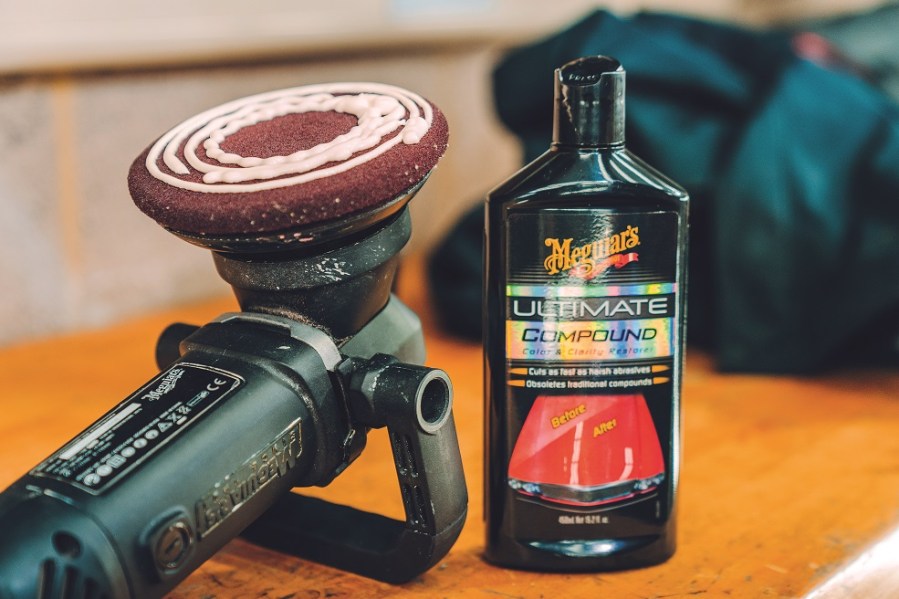Do you know the difference between a wax and a polish? Are you familiar with the two-bucket method? We pitched a list of detailing FAQs to Meguiar’s UK to answer to help make detailing simpler.
Car detailing has become massive business over the past decade. Gone are the days of grabbing a bucket, sponge, and your mum’s bottle of washing up liquid (whatever you do, don’t do that, it’ll cause more harm than good) and giving your car a quick wipe down. Detailing your car is an art form, but with so many products on the market like clay bars, iron removers, snow foams and ceramic coatings it’s become overwhelming to the everyday enthusiast. That’s why we’ve sat down with industry expert Tom Clarke from Meguiar’s UK, to answer those detailing FAQs.
Detailing FAQs
I often use my local car wash, is this detrimental to my paint finish?
It can be, yes. Typically, the high volume of cars they are washing means they don’t wash the accessories between washes, and this can have the impact of inflicting swirl marks in the paint work.
Also, because they are a business and they are obviously there to make money, they tend to use a product based on its costs, rather than its performance.

What are swirl marks?
These are superficial marks in the upper surface of your paintwork.

What are the benefits of using snow foam on the car rather than just doing a general pre-wash?
Snow foam is by far the safest way to pre-wash the car. The cleaners that are built into snow foams will soften up the larger containments ahead of your contact wash. Again, minimizing the risk of swirls marks. Snow foam is the ideal first stage in cleaning your car.
Why do people keep talking about iron fallout? What is it, and how’s it harmful to my car?
Fallout is the tiny iron particles that are found on your car’s bodywork, they can come from anywhere but typically come from your brakes. The small iron particles bond to any surface they meet as they are hot. Because they are a bare metal, they rust and cause orange-coloured staining on the surface.
If you are a commuter and use the train station car park, it’s good practice to check your paintwork as the train’s brakes and wheels can cause bad fallout coverage. The good news is a simple spray with a fallout remover will dissolve the particles.
Can you tell us what the difference is between carnauba waxes, synthetic polymer paint sealants and ceramic glass coatings?
Carnauba is the OG of protection, it was the first thing scientists reached for when talking about coatings. It is used in a lot of everyday things – the shiny coating on Nurofen and Tic Tacs for example, it’s even in Haribo Starburst, check the ingredients. It is a great coating. However, technology has moved on, and scientists have taken all the good things from carnauba and then added things to make it last longer, use less, and create better gloss, these are known as synthetic products. Ceramic coatings are essentially synthetic sealants at the extreme, they are creating a secondary layer of protection, like a lacquer, and most of the time you will find they need to be applied by a professional.

My exterior plastics have faded, are there any tricks to reviving them?
Sadly, there isn’t a long-term fix to this, as essentially the dye has faded out of the plastic. You can use something like Ultimate Black that will dress them back to a nice finish, but it is a dressing.
What’s the difference between a wax and a polish?
Put simply: A polish creates the gloss, and a wax seals it in and protects the surface.

I’ve got a matt wrap on my car, what shampoo and detailer should I use? And are there any products to avoid?
Matt is a tough one as most products are designed to create a gloss, so stay away from anything that says it will do that. We would suggest our Gold Class Shampoo for washing, followed by our Hybrid Ceramic Liquid Wax to protect.
I keep hearing about ceramic-based products? What are they, and should I be using them?
So, unlike a Ceramic Glass Coating, there are now Synthetic Ceramic products that give you the added protection of Sio2 but they are blended with synthetics to make them user friendly at home. In our case, the Hybrid Ceramic Liquid Wax is our longest lasting wax.
What’s your best tip for cleaning windows without getting smears?
Less is more! One good mist of product is enough for a side window, any more than that and the product gets smeared around.

What is the difference between paint correction, compounding, polishing or buffing?
Well, these are all terms that get thrown around but factually paint correction is the step after claying, that removes swirl marks and brings clarity back to the surface. Compounding is the same as paint correction. Polishing is the step after paint correction, where you feed polishing oils into the paint to create gloss, but it is not ‘cutting’. And buffing is simply the removal of product.
And finally, if there was one tip you’d give a car care novice, what would it be?
Keep it simple. Find something you like, either a process and/or product, and then build on that. Don’t buy all the gear and have no idea.










